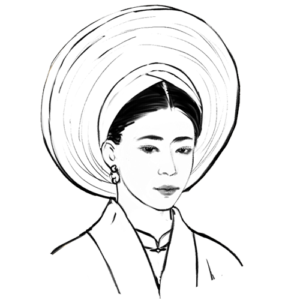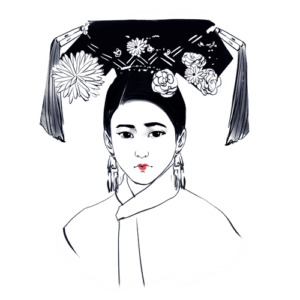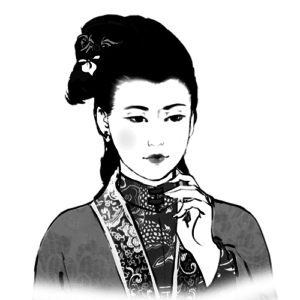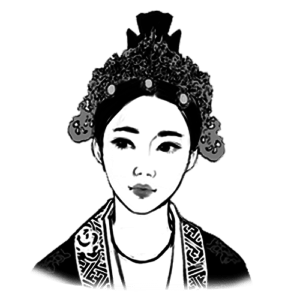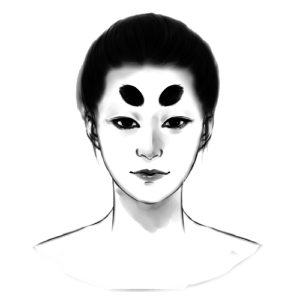Hairstyles of Nguyen Dynasty
Viet Nam 1802-1945
The Nguyen Dynasty is Viet Nam’s last ruling family and lasted for 143 years.
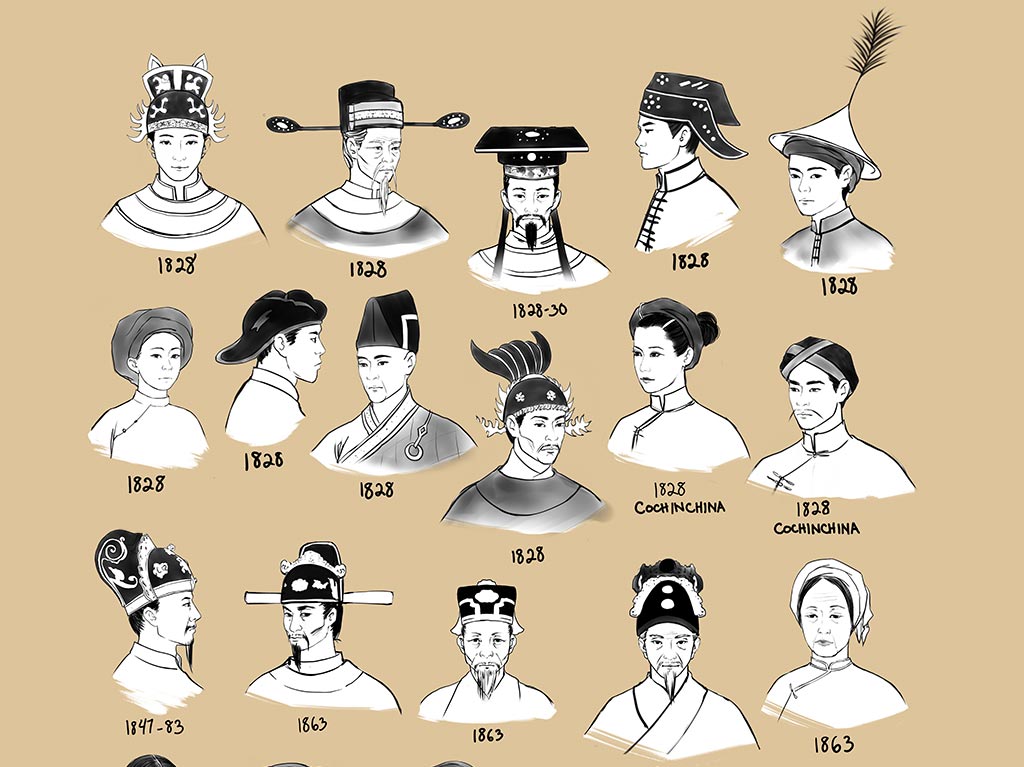
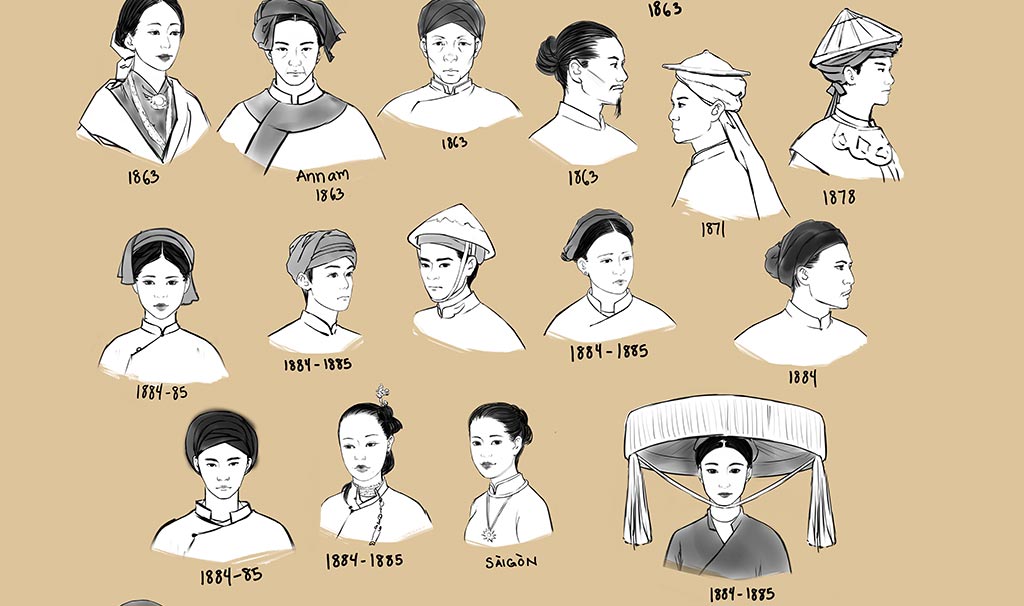
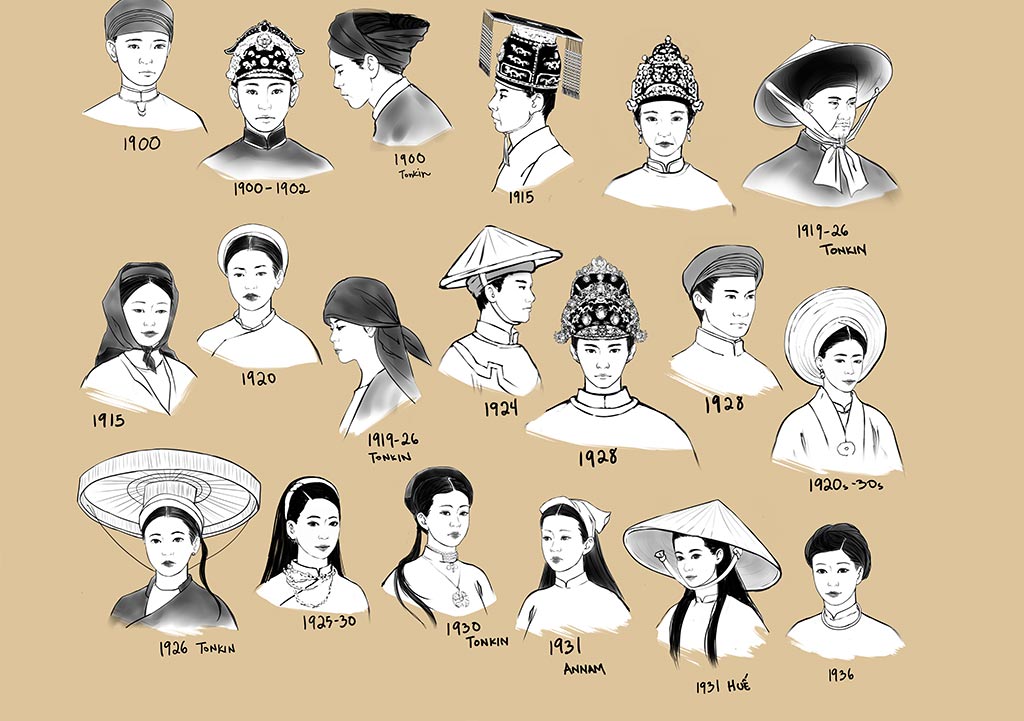
Excerpts from John Crawfurd’s Journal of an Embassy to the Courts of Siam and Cochin-China , published in 1830:
“Both sexes dress nearly alike. For the lower part of the body, the covering consists of a pair of loose trowsers, secured at the waist by a sash. The main portion of dress consists of two or more loose frocks, reaching half-way down the thigh. This, for such matters as among other Eastern people is uniform and constant, overlaps to the right side, and is secured by five buttons and as many hoops. Its sleeves are loose, and with persons not compelled to labour, they dangle a foot, or even a foot and a half, beyond the extremities of the fingers; but the lower orders, from necessity, wear them short.” (pg 277)
“With the women, the inner frock reaches below the knee, and the outer down to the ankles.” (pg 278)
“The hair of the head is worn long, and put up in a knot at the back of the head, as was practiced by the Chinese before the present absurd fashion was imposed upon them by the Tartars. Both sexes wear turbans, which are put on with much neatness.” (pg 278)
“The lower orders, except when dressed, seldom wear these turbans.” (pg 278) “When abroad, both sexes wear varnished straw hats, little less than two feet in diameter, tied under the chin. These, which are sometimes in the form of an inverted basin, and at others resembling a sugar-loaf, afford, however grotesque in appearance, good protection against sun and rain.” (pg 278)
“The materials of dress consist of silk or cotton; the first being of more frequent use than I have observed in any other country. The inner frock is cotton of domestic manufacture, always unbleached; for, literally, there is not a rag of white linen in the kingdom. The outer frocks and gown, with the better ranks, are always of silk, or flowered gauze; and the latter is commonly Chinese manufacture. The trowsers, with the same class, are either plain silk, or crape of domestic fabric.” (pg 278-279)
“The turban is crape, always black or blue, but most frequently the former; and this is also a home fabric.” (pg 279)
“The lower orders are generally clad in cotton; but, even among them, silk is not unfrequently to be seen. Their cotton dress is very generally dyed of a dark brown color, as if tanned. This color is given to it by the tuberous root which I have mentioned in another place.” (pg 279)
“Ornaments of the precious metals, or gems, do not appear to be very general. The women wear occasionally armlets and bracelets of gold. Where gems are worn, those of most frequent use are pearls, and amber brought from Yu-nan.” (pg 279)
“The women wear ear-rings, and secure the hair by a bodkin with an ornamented gold-head.” (pg 279)
References
- Journal of an Embassy to the Courts of Siam and Cochin-China by John Crawfurd (1830)
- Southeast Asia Visions by Cornell University Library
- Visual References

